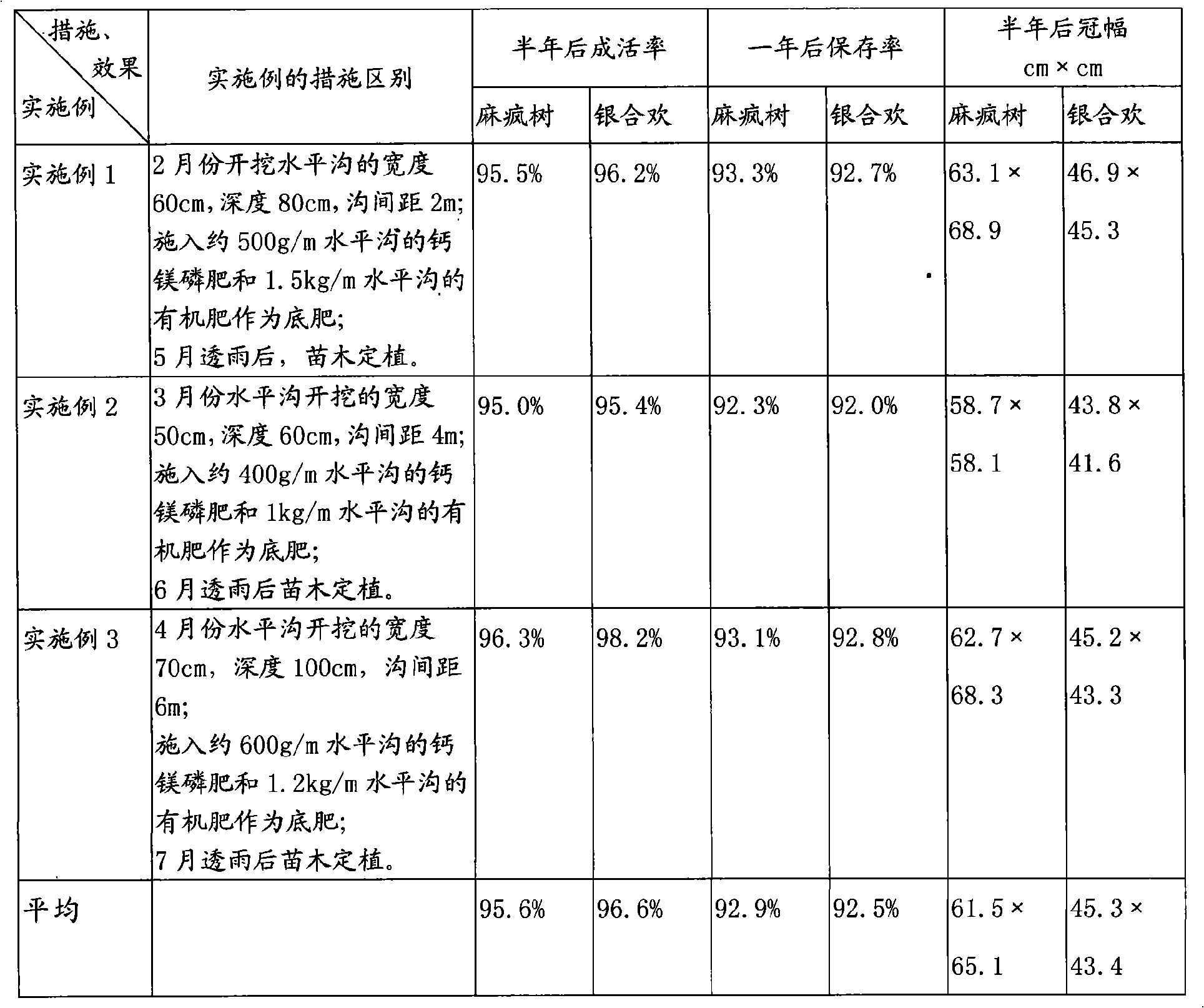Method of forestation on Jinshajiang river dry-hot valley partitioned slope horizontal ditch
A dry-hot valley and horizontal ditch technology, applied in afforestation, land preparation methods, forestry and other directions, can solve the problems of seedlings not taking root, not opening ditches to collect water, not retaining water and fertilizer, etc., to increase rainwater infiltration, operability, etc. Strong, scientific and practical effect
- Summary
- Abstract
- Description
- Claims
- Application Information
AI Technical Summary
Problems solved by technology
Method used
Image
Examples
Embodiment 1
[0021] Present embodiment 1 is illustrated with Jatropha curcas, Leucaena afforestation as example, and afforestation area is about 110 mus and 200 mus respectively, and annual bag seedlings are all adopted during afforestation, and the afforestation method of two kinds of seedlings all carries out by the following steps:
[0022] 1. Construction of horizontal ditches across slopes: In February, select barren slopes suitable for forestry to build horizontal ditches along the contour lines. The width of the horizontal ditch excavation is 60cm, the depth is 80cm, and the distance between the ditch is 2m. When excavating, the topsoil is placed on the upper edge of the ditch, and the raw soil is placed on the lower edge of the ditch, which is convenient for stacking and backfilling.
[0023] 2. Soil backfill: topsoil is backfilled at the bottom of the ditch, and the raw soil is placed on top to facilitate maturation. After the backfill is settled, it occupies 3 / 4 of the ditch dept...
Embodiment 2
[0028] Embodiment 2 and embodiment 3: embodiment 2 and embodiment 3 build wide, deep, long difference and different in fertilization amount at the horizontal ditch of separating slope listed in table 1, all the other operation steps and methods are all with embodiment 1, see Table 1 for details.
Embodiment 4
[0029] Embodiment 4 (contrast is traditional afforestation method)
[0030] Embodiment 4 adopts traditional afforestation method to carry out, and implementation area is about 50 mus, and nursery stock is bag seedling equally, specifically carries out according to the following steps:
[0031] 1. Digging planting pits: After the rain in May or July, when the soil is moist, dig planting pits with a length, width, and depth of about 25 cm in the afforestation area according to the afforestation density.
[0032] 2. Seedling planting: Tear off the plastic bag of seedlings, put the seedlings, return the soil and fill until the soil above the root zone is slightly ridged, then compact the ridged soil, and then sprinkle a layer of loose soil to make it level with the surrounding soil, and finally use soil A circle along the outer edge of the pit is made into a rain pit. Soil compaction is good for the roots of seedlings to receive moisture from the soil, and spreading a layer of lo...
PUM
 Login to View More
Login to View More Abstract
Description
Claims
Application Information
 Login to View More
Login to View More - R&D
- Intellectual Property
- Life Sciences
- Materials
- Tech Scout
- Unparalleled Data Quality
- Higher Quality Content
- 60% Fewer Hallucinations
Browse by: Latest US Patents, China's latest patents, Technical Efficacy Thesaurus, Application Domain, Technology Topic, Popular Technical Reports.
© 2025 PatSnap. All rights reserved.Legal|Privacy policy|Modern Slavery Act Transparency Statement|Sitemap|About US| Contact US: help@patsnap.com

